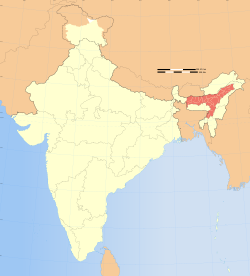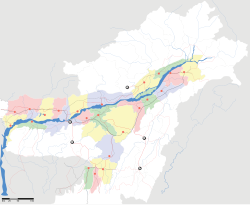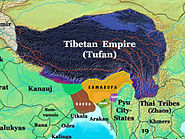This article is about the website and its owner Facebook, Inc. For the photographic directory, see
face book.
Facebook, Inc.
 |

Screenshot of Facebook main page on
August 1 2013
|
| Type | Public |
|---|
| Traded as | NASDAQ: FB |
|---|
| Foundation date | Cambridge, Massachusetts, U.S. (February 4, 2004 (February 4, 2004)) |
|---|
| Headquarters | Menlo Park, California, U.S. |
|---|
| Area served | United States (2004–05)
Worldwide (2005–present) |
|---|
| Founder(s) |
|
|---|
| Key people | Mark Zuckerberg
(Chairman and CEO)
Sheryl Sandberg
(COO) |
|---|
| Industry | Internet |
|---|
| Revenue |  $5.1 billion (2012)[1] $5.1 billion (2012)[1] |
|---|
| Operating income |  US$ 538 million (2012)[2] US$ 538 million (2012)[2] |
|---|
| Net income |  US$ 053 million (2012)[2] US$ 053 million (2012)[2] |
|---|
| Total assets |  US$ 15.10 billion (2012)[2] US$ 15.10 billion (2012)[2] |
|---|
| Total equity |  US$ 11.75 billion (2012)[2] US$ 11.75 billion (2012)[2] |
|---|
| Employees | 5,299 (June,2013)[3] |
|---|
| Subsidiaries | Instagram |
|---|
| Website | facebook.com |
|---|
| Written in | C++ and PHP[4] |
|---|
| Alexa rank |  1 (June 2013[update])[5] 1 (June 2013[update])[5] |
|---|
| Type of site | Social networking service |
|---|
| Registration | Required |
|---|
| Users | 1.15 billion (active March 2013)[6] |
|---|
| Available in | Multilingual (70) |
|---|
| Launched | February 4, 2004 (2004-02-04) |
|---|
| Current status | Active |
|---|
Facebook is an online
social networking service, whose name stems from the
colloquial name for the book given to students at the start of the academic year by some university administrations in the United States to help students get to know each other.
[7] It was founded in February 2004 by
Mark Zuckerberg with his college roommates and fellow
Harvard University students
Eduardo Saverin,
Andrew McCollum,
Dustin Moskovitz and
Chris Hughes.
[8] The website's membership was initially limited by the founders to Harvard students, but was expanded to other colleges in the Boston area, the
Ivy League, and
Stanford University. It gradually added support for students at various other universities before opening to high school students, and eventually to anyone aged 13 and over. Facebook now allows any users who declare themselves to be at least 13 years old to become registered users of the site.
[9]
Users must register before using the site, after which they may create a
personal profile, add other users as
friends, exchange messages, and receive automatic notifications when they update their profile. Additionally, users may join common-interest user groups, organized by workplace, school or college, or other characteristics, and categorize their friends into lists such as "People From Work" or "Close Friends". As of September 2012, Facebook has over
one billion active users,
[10] of which 8.7% are fake.
[11] According to a May 2011
Consumer Reports survey, there are 7.5 million children under 13 with accounts and 5 million under 10, violating the site's terms of service.
[12] Facebook (as of 2012) has about 180
petabytes of data a year and grows by over half a petabyte every 24 hour.
[13]
In May 2005, Accel partners invested $12.7 million in Facebook, and
Jim Breyer[14] added $1 million of his own money to the pot. A January 2009
Compete.com study ranked Facebook as the most used social networking service by worldwide monthly active users.
[15] Entertainment Weekly included the site on its end-of-the-decade "best-of" list, saying, "How on earth did we stalk our exes, remember our co-workers' birthdays, bug our friends, and play a rousing game of
Scrabulous before Facebook?"
[16] Facebook eventually filed for an
initial public offering on February 1, 2012, and was headquartered in
Menlo Park,
California.
[2] Facebook Inc. began selling stock to the public and trading on the
NASDAQ on May 18, 2012.
[17] Based on its 2012 income of USD 5.1 Billion, Facebook joined the
Fortune 500 list for the first time, being placed at position of 462 on the list published in May 2013.
[18]
History
Pre-IPO
Mark Zuckerberg wrote Facemash, the predecessor to Facebook, on October 28, 2003, while attending
Harvard as a
sophomore. According to
The Harvard Crimson, the site was comparable to
Hot or Not, and "used photos compiled from the online facebooks of nine houses, placing two next to each other at a time and asking users to choose the 'hotter' person"
[19][20]
To accomplish this, Zuckerberg
hacked into the protected areas of Harvard's computer network and copied the houses' private dormitory
ID images. Harvard at that time did not have a student "
Facebook" (a directory with photos and basic information), though individual houses had been issuing their own paper facebooks since the mid-1980s. Facemash attracted 450 visitors and 22,000 photo-views in its first four hours online.
[19][21]
The site was quickly forwarded to several campus group list-servers, but was shut down a few days later by the Harvard administration. Zuckerberg faced expulsion and was charged by the administration with breach of security, violating
copyrights, and violating individual privacy. Ultimately, the charges were dropped.
[22] Zuckerberg expanded on this initial project that semester by creating a social study tool ahead of an
art history final, by uploading 500
Augustan images to a website, with one image per page along with a comment section.
[21] He opened the site up to his classmates, and people started sharing their notes.
The following semester, Zuckerberg began writing code for a new website in January 2004. He was inspired, he said, by an editorial in
The Harvard Crimson about the Facemash incident.
[23] On February 4, 2004, Zuckerberg launched "Thefacebook", originally located at thefacebook.com.
[24]
Six days after the site launched, three Harvard seniors,
Cameron Winklevoss,
Tyler Winklevoss, and
Divya Narendra, accused Zuckerberg of intentionally misleading them into believing he would help them build a social network called
HarvardConnection.com, while he was instead using their ideas to build a competing product.
[25] The three complained to the
Harvard Crimson, and the newspaper began an investigation. The three later filed a lawsuit against Zuckerberg, subsequently settling.
[26] The agreed settlement was for 1.2m shares which were worth $300m at Facebook's IPO.
[27]
Membership was initially restricted to students of
Harvard College, and within the first month, more than half the undergraduate population at Harvard was registered on the service.
[28] Eduardo Saverin (business aspects),
Dustin Moskovitz (programmer),
Andrew McCollum (graphic artist), and
Chris Hughes soon joined Zuckerberg to help promote the website. In March 2004, Facebook expanded to Stanford,
Columbia, and Yale.
[29] It soon opened to the other
Ivy League schools,
Boston University,
New York University,
MIT, and gradually most universities in Canada and the United States.
[30][31]
In mid-2004, entrepreneur
Sean Parker, who had been informally advising Zuckerberg, became the company's president.
[32] In June 2004, Facebook moved its base of operations to
Palo Alto, California.
[29] It received its first investment later that month from
PayPal co-founder
Peter Thiel.
[33] The company dropped
The from its name after purchasing the
domain name facebook.com in 2005 for $200,000.
[34]
Facebook launched a high-school version in September 2005, which Zuckerberg called the next logical step.
[35] At that time, high-school networks required an invitation to join.
[36] Facebook later expanded membership eligibility to employees of several companies, including
Apple Inc. and
Microsoft.
[37] Facebook was then opened on September 26, 2006, to everyone of age 13 and older with a valid
email address.
[38][39]
Late in 2007, Facebook had 100,000 business pages, allowing companies to attract potential customers and tell about themselves. These started as group pages, but a new concept called company pages was planned.
[40]
On October 24, 2007, Microsoft announced that it had purchased a 1.6% share of Facebook for $240 million, giving Facebook a total implied value of around $15 billion.
[41] Microsoft's purchase included rights to place international ads on Facebook.
[42] In October 2008, Facebook announced that it would set up its international headquarters in
Dublin, Ireland.
[43] In September 2009, Facebook said that it had turned cash-flow positive for the first time.
[44] In November 2010, based on
SecondMarket Inc., an exchange for shares of privately held companies, Facebook's value was $41 billion (slightly surpassing
eBay's) and it became the third largest U.S. Web company after
Google and
Amazon.
[45]
Traffic to Facebook increased steadily after 2009. More people visited Facebook than Google for the week ending March 13, 2010.
[46]
In March 2011, it was reported that Facebook removes approximately 20,000 profiles from the site every day for various infractions, including spam, inappropriate content and underage use, as part of its efforts to boost cyber security.
[47]
In early 2011, Facebook announced plans to move to its new headquarters, the former
Sun Microsystems campus in
Menlo Park, California.
[48][49]
Release of statistics by
DoubleClick showed that Facebook reached one
trillion page views in the month of June 2011, making it the most visited website of those tracked by DoubleClick.
[50]
According to the Nielsen Media Research study, released in December 2011, Facebook is the second most accessed website in the US (behind Google).
[51]
In March 2012, Facebook announced App Center, an online mobile store which sells applications that connect to Facebook. The store will be available to
iPhone,
Android and mobile web users.
[52]
Facebook, Inc.
held an initial public offering on May 17, 2012, negotiating a share price of $38 apiece, valuing the company at $104 billion, the largest valuation to date for a newly listed public company.
[53]
Initial public offering
Main article:
Facebook IPO
Facebook filed their S1 document with the
Securities and Exchange Commission (SEC) on February 1, 2012. The company filed for a
US$5 billion
initial public offering (IPO), making it one of the biggest in tech history and the biggest in Internet history.
[54] Facebook valued its stock at $38 a share, pricing the company at $104 billion, the largest valuation to date for a newly public company.
[55] The IPO raised $16 billion, making it the third largest in U.S. history.
[56][57] The shares began to be traded on May 18, and though the stock struggled to stay above the IPO price for most of the day, it set a new record for trading volume of an IPO, 460 million shares.
[58] The first day of trading was marred by numerous technical glitches that prevented orders from going through.
[59] Only the aforementioned technical glitches and artificial support from underwriters prevented the stock price from falling below the IPO price on the first day of trading.
[60]
Later, it was revealed that Facebook's lead underwriters,
Morgan Stanley (MS),
JP Morgan (JPM), and
Goldman Sachs (GS) all cut their earnings forecasts for the company in the middle of the IPO roadshow.
[61] The stock continued its freefall in subsequent days, closing at 34.03 on May 21 and 31.00 on May 22. A
'circuit breaker' was used in an attempt to slow down the decline in the stock price.
[62] Securities and Exchange Commission Chairman
Mary Schapiro and
Financial Industry Regulatory Authority (FINRA) Chairman Rick Ketchum called for a review of the circumstances surrounding its troubled initial public offering.
[63]
Facebooks' IPO is now under investigation and has been compared to
pump and dump schemes.
[59][61][63][64] In the meantime, a class-action lawsuit is in the works due to the trading glitches, which led to botched orders.
[65][66] Apparently, the glitches prevented a number of investors from selling the stock during the first day of trading while the stock price was falling - forcing them to incur bigger losses when their trades finally went through.
Additional lawsuits have been filed due to allegations that an underwriter for Morgan Stanley selectively revealed adjusted earnings estimates to preferred clients.
[67] The remaining underwriters (MS, JPM, GS) and Facebook's CEO and board are also facing litigation.
[68] It is believed that adjustments to earnings estimates were communicated to the underwriters by a Facebook financial officer, who in turn used the information to cash out on their positions while leaving the general public with overpriced shares.
[69]
By the end of May 2012, the stock lost over a quarter of its starting value, which led to the
Wall Street Journal calling the IPO a "fiasco."
[70]
After IPO
In July 2012, Facebook added a
gay marriage icon to its timeline feature.
[71] On August 23, 2012, Facebook released an update to its iOS app, version 5.0. The app changed how data was collected and displayed to make the app faster. On January 15, 2013, Facebook announced its new product
Graph Search, which provides users with a "precise answer" rather than a link to an answer by leveraging the data already present on its site.
[72] Facebook emphasized that the feature would be "privacy-aware," returning only results from content already shared with the user.
[73] The company is the subject of a lawsuit by Rembrandt Social Media for the use of patents involving the "Like" button.
[74] On April 3, 2013, Facebook unveiled
Home, a user-interface layer for Android devices offering greater integration with the service.
HTC announced a
smartphone with Home pre-loaded, the
HTC First.
[75] On April 15, 2013, Facebook announced an alliance with the National Association of Attorneys General to provide teens and parents with information on tools that to manage Facebook profiles. The partnership spanned 19 states.
[76] On April 19, 2013, Facebook officially modfied its logo to remove the faint blue line at the bottom of the "F" icon. The letter "F" moved closer to the edge of the box.
[77]
Following a campaign uniting 100 advocacy groups, Facebook agreed to update its policy on hate speech. The campaign highlighted content promoting domestic and sexual violence against women, and used over 57,000 tweets and more than 4,900 emails to create outcomes such as the withdrawal of advertising from Facebook by 15 companies, including Nissan UK, House of Burlesque and Nationwide UK. The social media website initially responded by stating that "While it may be vulgar and offensive, distasteful content on its own does not violate our policies.",
[78] but agreed on May 29, 2013 to take action after it had "become clear that our systems to identify and remove hate speech have failed to work as effectively as we would like, particularly around issues of gender-based hate."
[79]
On June 12, 2013 Facebook officially announced on its newsroom that it was introducing clickable hashtags to help users follow trending discussions or search what others are talking about on a particular topic.
[80] A July 2013
Wall Street Journal article identified the Facebook IPO as the cause of a change in the U.S.' national economic statistics, as the company home,
San Mateo County, California, became the top wage-earning county in the country after the fourth quarter of 2012. The Bureau of Labor Statistics reported that the average weekly wage in the county was
US$3,240, 107% higher than the previous year: "That's the equivalent of $168,000 a year, and more than more than 50% higher than the next highest county, New York County (better known as Manhattan), which came in at $2,107 a week, or roughly $110,000 a year."
[81]

















